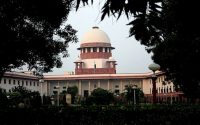$100 Website Offer
Get your personal website + domain for just $100.
Limited Time Offer!
Claim Your Website NowHow Jamaican Supreme Court has killed India’s hope of selling Aadhaar to the world, for now
Source: theprint.in
Prime Minister Narendra Modi’s first term was marked by a vigorous push for Aadhaar, India’s biometric system that was often projected as a success story ready for replication in other countries. But a recent ruling by Jamaican Supreme Court poses an important question: does Aadhaar hold a good chance of being exported? Can it become part of India’s diplomatic outreach?
Over the past few years, the Aadhar project has been implemented with considerable energy. A unique feature of its architecture is that even private entities can use the Aadhaar database for identification and authentication of individuals, as well as develop third party apps. Considerable value proposition is perceived to arise from this feature, one that other nations are naturally assumed to be interested in implementing. The techno-legal frame on which the Aadhaar project is built has also received more traction because the Aadhaar Act was declared constitutionally valid in material respects by the Supreme Court of India last year.
The Jamaican Supreme Court’s verdict in April leaves the Aadhar verdict’s hopes of finding customers abroad uncertain. In the decision, the Jamaican Supreme Court evaluated the Indian Supreme Court verdict and sided with the minority opinion expressed by Justice D.Y. Chandrachud rather than with the majority verdict. To understand the decision, we must engage with the subject matter of legal challenge before the Jamaican court – the National Identification and Registration Act (NIRA). Gautam Bhatia has comprehensively compared Jamaica’s legislation with the Aadhaar Act, concluding that despite some formal dissimilarities – the most striking of which is the criminalisation of individuals who refuse to share their personal information – NIRA broadly enabled the same structure as the Indian enactment. This included the collection of biometric identities, a centralised storage architecture, and the linking of databases through a unique identifier.
During the hearings, Jacqueline Stewart, the chief technical director tasked with oversight of the NIRA project, deposed that many citizens within the age band of 15 to 18 years did not possess any identification and couldn’t therefore make use of employment opportunities. She also emphasised the utility of this exercise in curbing financial frauds, identity theft, money laundering, terrorist financing and other organised crimes. Striking down NIRA as unconstitutional in Julian J. Robinson v. The Attorney General of Jamaica, Chief Justice Bryan Sykes followed the views expressed in Justice Chandrachud’s dissent on the acceptability of biometric technologies, which the latter said stood out because of the scale of privacy invasions they posed and must therefore be restricted to narrow purposes such as crime investigation rather than wider identification and authentication of the general population.
Endorsing this view, Chief Justice Sykes noted that the collection of biometric information could not be treated in isolation. Instead, the entire panoply of activities – collecting biographical information, combining it with biometric data, automating the process with supporting algorithms, seeding the identification numbers across databases – lowered the freedom to stay anonymous and heightened the risk of profiling and generating new information about the data subject. The Chief Justice also agreed with the need expressed in Justice Chandrachud’s dissent for “a strong independent and autonomous body which has the power to examine the operations of the Authority and report to an institution that is independent of the Authority.”
In her deposition, Jacqueline Stewart had also said that Jamaica’s National Identification System would help implement a coherent e-government and a “joined-up government” strategy. The Jamaican Supreme Court probed deeper into this part of the affidavit, expressing fears that this strategy, much like the state resident data hubs that we have been critical of in the past, would result in a surveillance state.
Apart from the fact that another country’s Supreme Court scrutinized a near-similar structural architecture as Aadhaar, and found it to be unconstitutional for its impact on individual rights, the care with which the Jamaican court examined the data offered by Stewart in support of this project stands out. In a more sophisticated application of the proportionality test than Justice A.K. Sikri’s majority opinion, all three judges assessed the factual assertions to conclude that neither were the benefits from the identification programme clearly borne out, nor was it evident that other, less intrusive measures were considered before choosing the biometric solution.
A key feature of Prime Minister Modi’s second term will be about finding the right place of technological prowess in his government’s overall diplomatic agenda. The Jamaican verdict is a reminder that exporting a techno-legal project like Aadhaar as part of India’s diplomacy efforts may be hard, given the domestic legal frameworks and local contexts that exist in other countries. Unlike other kinds of technology exports in areas like defence and energy, digital identities come as a package where technology (and the law supporting it) is only one part of the diplomacy mission while another, critical part, is the actual implementation and proven success within a non-technical, human context.
If Aadhar is to be exported and become a kind of model for citizen identification outside of India, it would require the Modi government to integrate a comprehensive rollout strategy. This strategy must revolves around Aadhaar, one which quantifies the actual benefits of a similar architecture over other, potentially less intrusive, solutions. India’s diplomatic effort would also need to have measures that mitigate any hardships caused because of changes from an earlier system. What will be crucial for such an endeavour is a more sustained understanding of how such a project alters citizen-state interactions, and how such changes can be legally addressed.



